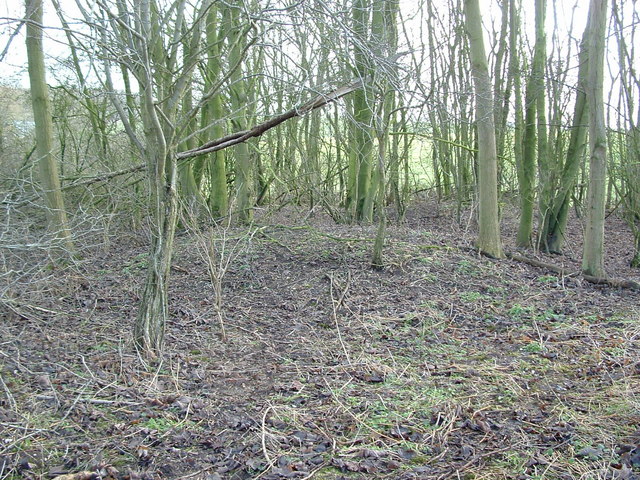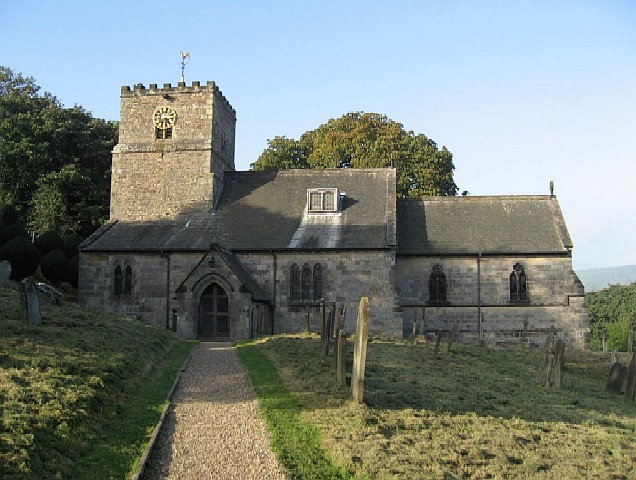|
Uncleby
Uncleby is a hamlet in the East Riding of Yorkshire, England. It forms part of the civil parish of Kirby Underdale. It is situated approximately north of Pocklington. History Uncleby is the site of an Anglian cemetery. 76 inhumation burials were excavated by Canon William Greenwell in 1868. These graves date from the 7th and 8th centuries AD. The objects from these excavations are held in the Yorkshire Museum and the British Museum The British Museum is a public museum dedicated to human history, art and culture located in the Bloomsbury area of London. Its permanent collection of eight million works is among the largest and most comprehensive in existence. It docum .... References * External links * Hamlets in the East Riding of Yorkshire {{EastRiding-geo-stub ... [...More Info...] [...Related Items...] OR: [Wikipedia] [Google] [Baidu] |
William Greenwell
Canon William Greenwell, (23 March 1820 – 27 January 1918) was an English archaeologist and Church of England priest. Early life William Greenwell was born 23 March 1820 at the estate known as Greenwell Ford near Lanchester, County Durham, England. He was the eldest son of William Thomas Greenwell (1777–1856) and Dorothy Smales. He had three brothers Francis, Alan, and Henry Nicholas Greenwell, and a sister Dorothy (1821–1882) who published poetry under the name Dora Greenwell. After an early education by Rev George Newby, he attended Durham School. One of his schoolmates was Henry Baker Tristram. He matriculated at University College, Durham in October 1836 and graduated Bachelor of Arts (BA) in June 1839. He started training to be a barrister at Middle Temple, but owing to ill health decided to leave London and return to University College in 1841, completing a licentiate in Theology in 1842. He received a Master of Arts in 1843. Greenwell was ordained a deacon by Bish ... [...More Info...] [...Related Items...] OR: [Wikipedia] [Google] [Baidu] |
Kirby Underdale
Kirby Underdale is a village and civil parish in the East Riding of Yorkshire, England. It is situated approximately north of Pocklington town centre and lies north of the main A166 road from York to Driffield. The civil parish is formed by the village of Kirby Underdale and the hamlets of Garrowby, Painsthorpe and Uncleby. According to the 2011 UK Census, Kirby Underdale parish had a population of 125, a decrease on the 2001 UK Census figure of 129. The church, dedicated to All Saints, was designated a Grade I listed building in 1987 and is now recorded in the National Heritage List for England, maintained by Historic England. In Baines 1823 ''History, Directory and Gazetteer of the County of York,'' Kirby Underdale village and parish was listed as "Kirby Guderdale", and was in the Wapentake of Buckrose. All Saints' Church and its benefice was in the patronage of King George IV. Population at the time was 385, which included two farmers, one of whom was a butcher, a black ... [...More Info...] [...Related Items...] OR: [Wikipedia] [Google] [Baidu] |
East Riding Of Yorkshire
The East Riding of Yorkshire, or simply East Riding or East Yorkshire, is a ceremonial county and unitary authority area in the Yorkshire and the Humber region of England. It borders North Yorkshire to the north and west, South Yorkshire to the south-west, and Lincolnshire to the south. The coastal towns of Bridlington, Hornsea and Withernsea are popular with tourists, the town of Howden contains Howden Minster, Market Weighton, Pocklington, Brough, Hedon and Driffield are market towns with markets held throughout the year and Hessle and Goole are important port towns for the county. The port city of Kingston upon Hull is an economic, transport and tourism centre which also receives much sea freight from around the world. The current East Riding of Yorkshire came into existence in 1996 after the abolition of the County of Humberside. The county's administration is in the ancient market town of Beverley. The landscape is mainly rural, consisting of rolling hills, valley ... [...More Info...] [...Related Items...] OR: [Wikipedia] [Google] [Baidu] |
East Yorkshire (UK Parliament Constituency)
East Yorkshire is a county constituency for the House of Commons of the Parliament of the United Kingdom. It elects one Member of Parliament (MP) at least once every five years by the first-past-the-post electoral system. The constituency has been represented by Greg Knight of the Conservative Party since the 2001 general election. History The East Yorkshire constituency was created for the 1997 general election and replaced the Bridlington constituency. The Conservative MP for that seat since 1979, John Townend, won the new seat and held it until he retired at the 2001 general election. His successor, the current incumbent Greg Knight, had previously represented the marginal seat of Derby North from 1983 until he was defeated in the 1997 general election. To date it has been a Conservative safe seat A safe seat is an electoral district (constituency) in a legislative body (e.g. Congress, Parliament, City Council) which is regarded as fully secure, for either a certain ... [...More Info...] [...Related Items...] OR: [Wikipedia] [Google] [Baidu] |
Hamlet (place)
A hamlet is a human settlement that is smaller than a town or village. Its size relative to a Parish (administrative division), parish can depend on the administration and region. A hamlet may be considered to be a smaller settlement or subdivision or satellite entity to a larger settlement. The word and concept of a hamlet has roots in the Anglo-Norman settlement of England, where the old French ' came to apply to small human settlements. Etymology The word comes from Anglo-Norman language, Anglo-Norman ', corresponding to Old French ', the diminutive of Old French ' meaning a little village. This, in turn, is a diminutive of Old French ', possibly borrowed from (West Germanic languages, West Germanic) Franconian languages. Compare with modern French ', Dutch language, Dutch ', Frisian languages, Frisian ', German ', Old English ' and Modern English ''home''. By country Afghanistan In Afghanistan, the counterpart of the hamlet is the Qila, qala (Dari language, Dari: ... [...More Info...] [...Related Items...] OR: [Wikipedia] [Google] [Baidu] |
Civil Parishes In England
In England, a civil parish is a type of Parish (administrative division), administrative parish used for Local government in England, local government. It is a territorial designation which is the lowest tier of local government below districts of England, districts and metropolitan and non-metropolitan counties of England, counties, or their combined form, the Unitary authorities of England, unitary authority. Civil parishes can trace their origin to the ancient system of Parish (Church of England), ecclesiastical parishes, which historically played a role in both secular and religious administration. Civil and religious parishes were formally differentiated in the 19th century and are now entirely separate. Civil parishes in their modern form came into being through the Local Government Act 1894, which established elected Parish councils in England, parish councils to take on the secular functions of the vestry, parish vestry. A civil parish can range in size from a sparsely ... [...More Info...] [...Related Items...] OR: [Wikipedia] [Google] [Baidu] |
Pocklington
Pocklington is a market town and civil parish situated at the foot of the Yorkshire Wolds in the East Riding of Yorkshire, England. The 2011 Census recorded its population as 8,337. It is east of York and northwest of Hull. The town's skyline is marked by the 15th-century west tower of All Saints' parish church. Pocklington is at the centre of the ecclesiastical Parish of Pocklington, which also includes the hamlet of Kilnwick Percy and outlying farms and houses. History Pocklington gets its name via the Old English "Poclintun" from the Anglian settlement of Pocel's (or Pocela's) people and the Old English word "tun" meaning farm or settlement, but though the town's name can only be traced back to around 650 AD, the inhabitation of Pocklington as a site is thought to extend back a further 1,000 years or more to the Bronze Age. Pocklington appears on the 14th-century Gough Map, the oldest route map in Great Britain. In the Iron Age Pocklington was a major town ... [...More Info...] [...Related Items...] OR: [Wikipedia] [Google] [Baidu] |
Angles
The Angles ( ang, Ængle, ; la, Angli) were one of the main Germanic peoples who settled in Great Britain in the post-Roman period. They founded several kingdoms of the Heptarchy in Anglo-Saxon England. Their name is the root of the name ''England'' ("land of Ængle"). According to Tacitus, writing around 100 AD, a people known as Angles (Anglii) lived east of the Langobards and Semnones, who lived near the Elbe river. Etymology The name of the Angles may have been first recorded in Latinised form, as ''Anglii'', in the ''Germania'' of Tacitus. It is thought to derive from the name of the area they originally inhabited, the Anglia Peninsula (''Angeln'' in modern German, ''Angel'' in Danish). Multiple theories concerning the etymology of the name have been hypothesised: # According to Gesta Danorum Dan and Angul (Angel) were made rulers by the consent of their people because of their bravery. Dan gave name to Danes and Angel gave names to Angles. # It originated from ... [...More Info...] [...Related Items...] OR: [Wikipedia] [Google] [Baidu] |
Yorkshire Museum
The Yorkshire Museum is a museum in York, England. It was opened in 1830, and has five permanent collections, covering biology, geology, archaeology, numismatics and astronomy. History The museum was founded by the Yorkshire Philosophical Society (YPS) to accommodate their geological and archaeological collections, and was originally housed in Ousegate, York, until the site became too small. In 1828, the society received by royal grant, of land formerly belonging to St Mary's Abbey for the purposes of building a new museum. The main building of the museum is called the Yorkshire Museum; it was designed by William Wilkins in a Greek Revival style and is a Grade I listed building. It was officially opened in February 1830, which makes it one of the longest established museums in England. A condition of the royal grant was that the land surrounding the museum building should be a botanic gardens and one was created in the 1830s. The botanic gardens are now known as the Museum G ... [...More Info...] [...Related Items...] OR: [Wikipedia] [Google] [Baidu] |
British Museum
The British Museum is a public museum dedicated to human history, art and culture located in the Bloomsbury area of London. Its permanent collection of eight million works is among the largest and most comprehensive in existence. It documents the story of human culture from its beginnings to the present.Among the national museums in London, sculpture and decorative and applied art are in the Victoria and Albert Museum; the British Museum houses earlier art, non-Western art, prints and drawings. The National Gallery holds the national collection of Western European art to about 1900, while art of the 20th century on is at Tate Modern. Tate Britain holds British Art from 1500 onwards. Books, manuscripts and many works on paper are in the British Library. There are significant overlaps between the coverage of the various collections. The British Museum was the first public national museum to cover all fields of knowledge. The museum was established in 1753, largely b ... [...More Info...] [...Related Items...] OR: [Wikipedia] [Google] [Baidu] |






